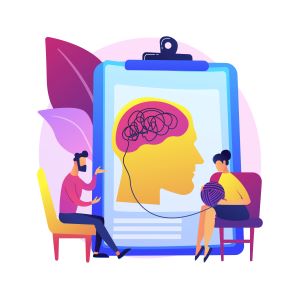Want to stop anxiety and do so on a regular basis? Grounding is a technique that stops anxiety and especially the escalation that can become a panic attack.
Oh, and to stop anxiety, no need to take a pill or use a substance, spend money, or engage in mindless scrolling, emotional eating or risky sex or other irrational distractions.
Unfortunately, these irrational distractions tend to make things worse in the long run for several reasons.
- Distractions take us away from the pain without solving the problem.
- The distraction can create it’s own disasters of your life from debt, relationship issues, health problems.
- Probably the most difficult, is it reduces our frustration tolerance so that it takes less stress to prompt us to use an irrational distraction.
Sadly, most medications that actually work come with some serious addiction issues and is one of the most abused medications used. The non-addictive medication options work somewhat. But due to the generalization of anxiety, it often doesn’t work longer term.
What is Anxiety?
Before understanding what grounding is and how it works with anxiety, let’s start with what anxiety is. From the Rational Living Therapy perspective, anxiety is a future-oriented, fear-based set of thoughts and beliefs that engage the flight of the central nervous system.
Anxiety isn’t something that one gets. It isn’t like we are wondering through a grocery store, someone sneezes and we catch anxiety. It is developed over time after many reactions to situations or watching others react. Often when there are a lot of chaos or bad experiences in childhood, we become oriented to look for more bad and be afraid of it. Or if we don’t experience it in our own lives, if we are raised by someone who is anxious we often pick up the tendencies. Our modern world is a host of uncertainties so lots of fodder for anxious thinking.
Unintentional Creation
We don’t get anxiety, it is something that we create unwittingly. Sometimes it can be quite a challenge to believe that it is our thinking that in a normal healthy brain causes our emotions. No surprise! We are taught from a young age that it is things, people and events in our lives that cause our emotions. thankfully, it is the reactions or our thinking and not unchangeable other things.
If that is true that things cause our emotions then we would ALL have to react the same to the same experience and we don’t. Many of us may react similarly but we are all different in our thinking and therefore our reactions.
This week I had a client reach out as she is “anxious” with her upcoming wedding this Saturday. It seems that it is her wedding that is causing her the anxiety and that isn’t true. Not every bride is anxious the week of her wedding. Some are as cool as a cucumber, others may be angry, others depressed, some scared, some indifferent. In other words, our emotional reactions to even a wedding are varied. Part of her anxious thinking revolves around the groom’s parents fighting and what they will mean in the ceremony.
To break this cycle is a large part of the rational self-counseling skills that I teach. Since it is an entire system, I can’t cover it in a single blog. What we can cover is the use of a rational distraction which is called grounding. It isn’t the solution to anxiety thinking, but it is helpful, stops the process of escalation of anxiety and can reduce anxiety reactions when used consistently. Grounding can also reduce anxiety responses over time.
As the wise Grand Master Oogway said, “Yesterday is history, tomorrow is a mystery, but today is a gift. That is why it is called present.” (Kong Fu Panda).
One great way to stop anxiety is through grounding. Grounding is an activity that brings someone out of the future fear-based thinking and brings the person back into this moment. A quick internet search nets thousands of grounding techniques. Here, we are going to build your own grounding tool and walk through creating a grounding technique or several just for you.
First you will develop it and then you need to practice it. Best to practice when you aren’t upset so that during times that you are, you will be remember to use it. For this to be there when you need it, you need to practice this daily for a lot longer than you think.
Step 1
Analysis: When do you find that you are anxious thinking/feeling? Is it in the morning, night? In certain situations such as crowded places, at work, in the stores? Are you more anxious driving? What are you thoughts? Are you concerned that someone is going to judge you? See through you? Fear of another nightmare? Fear of not sleeping? Are you making a mountain out of a mole hill? Creating worst case scenarios or what ifs?
You may have several anxious times and events that you are reacting to. Note those so that you may create a couple grounding techniques or maybe find one that fits those different times.
Step 2
Plan: The grounding technique that you develop may be different depending upon the situation or timing. Someone who is anxious thinking/feeling before bed may use a noise machine to ground them or listen to a meditation or self-hypnosis track. That isn’t as useful if the fear thinking/feeling is associated with driving. We don’t want to fall asleep at the wheel! If you find the anxiety is most associated with going out, then you may want to use a technique that is as portable as you.
Step 3
Anchor: This comes from a technique called neurolinguistic programming. Anchors are physical items that you can hold, touch, feel against your skin to be your reminder or even focus of grounding. Examples include – rings, necklaces, stones or crystals or coins. If you are at home, it can be a chair, shrine, garden. You can have two anchors. You can create something in your home space where you can go or a thing that you can carry with you. It can be the focus of the grounding but it is also a reminder of the technique.
Step 4
Techniques: There are many different techniques to grounding and here are a few categories:
Counting – some people find it helpful to count either up or down or by some denomination (count by 5’s, 3’s etc). For some people who are math oriented, can do simple computations such as 1 +1 = 2, 2+2 = 4, 4+4 = 8. Some people find counting seconds like a hand sweeping on a clock helpful.
Focusing: – this is literally bringing our attention and focus onto something in the environment. This is NON-JUDGMENTAL observations. Leave out any of your opinions. Let’s say you are observing a light fixture and observe that there are dead bugs in the globe. Note the dead bugs, the number, the size and avoid opinions like, “I hate bugs,” or “these people can’t clean!” If you find yourself being critical, observe it and note it. You can say, “Oh being critical” and then bring your mind back to just describing the item, person, etc.
- An outward item– this is when we put our attention on something and breathe until we are calm. This can be useful for those in spaces with others and don’t want to bring attention to themselves self-soothing. A light switch, a clock, coffee mug on your desk. Basically chose one thing to focus your eyes and mind on and breathe. To slow the brain, it is helpful to describe the mundane item – what does it look like, made of, others like it, one’s you’ve seen in the past, colors, textures, etc while you breathe in and out.
- Senses – This is when we focus on our senses. This is often called 5-4-3-2-1-1. Look around at 5 things you see, 4 things you feel, 3 things you hear, 2 things you smell and 1 thing you taste and 1 thought in your mind. Then repeat as many times until the brain gets out of past ruminations or future what ifs.
- Objects – This is a focus on something that we are interacting with in the environment. Maybe it is the chair you are setting in, the clothes you are wearing, your feet on the ground. It can be the anchor that we’ve chosen or a warm coffee mug or cold drink. It can also be something we have in our mouth – chewing gum, piece of fruit or hard candy.
- Selves – This is about our own sensations within our body. This can be challenging for some people. If feeling the racing heart is part of the escalation for you, then don’t chose this focusing object. The idea is to listen and feel for sensations within our body – our heart, temperature of the skin, what our stomach is doing and as you breath deeply, observing all the changes within. A time that this can be a good grounding technique is during workouts to be more entuned with your body and what it is doing as you are asking it to perform. This can be helpful for people with anxious thinking in gyms or studios.
- Walking – This is a technique to bring awareness and focus to walking and doing so very very slowly. Counting steps and feeling every part of the foot as it slowly plants and lifts and leaves all the weight on one foot. Then shift focus to the next foot as you shift weight with the step. Notice things such as what you can feel under your feet, how your balance changes when you walk very slowly, how it is to completely empty a foot of weight before stepping to refill the weight.
- Person – This is like all the other focusing activities, but instead the object of attention is another person. This can be helpful if you find that you get nervous talking to a boss or in situations in which you may be uncomfortable with another person. Look at what they are wearing, do they wear glasses or contacts, short or tall, thin and larger, what smells do they have, do they talk fast or slow, do they make direct contact, gesticulate when talking? And remember to observe not judge.
- Breathing – This will be discussed in the next step. But regardless of the technique you use, add deliberate and focused breathing.
Reciting – this category can range from mantras to lyrics. The point is to get the brain to focus on words that we are speaking. Different spoken recitations can include: a mantra or statement repeated such as “I am at peace in every minute of every day.” Maybe even a favorite song lyric or poem can work. It can be a favorite prayer, bible verse or passage from a book or a quote of someone. It is helpful that it is well learned and easily repeatable. To keep from becoming bored and therefore the mind drifting back to the anxious thinking, pay attention to the words, the breathing and try to vary pitch and tone if spoken out loud.
Environment – When we engage with something outside of ourselves, we can also use it to ground ourselves. This is like focusing but instead of observing passively, we are actively engaging with something. Some things that we can do include: placing our hands or feet in warm or cold water, stirring something, holding a piece of ice as it melts, taking warm laundry out of the drier. We can manipulate clay or putty. We can actually do the task paying attention to the sensations as we do it. We can also imagine ourselves doing a task and imagine or remember details of the event. Whether we experience or imagine an event, our brain doesn’t know the difference. Afterall it is our imagination of the future that largely is our anxiety thinking.
Visualization – To piggy back off the last, we can simply imagine something. We can create a variety of scenarios in our minds, after all we do so when we are anxious, so now we can use that creative component of our mind to end the anxiety. We can stop anxiety, by imagining our anxious thinking and feelings like balloons floating away from us. We can imagine the anxious thinking as a piece of garbage that we through away or burn in a fireplace.
We can have positive visualizations such as imagining peace flowing into us like warm water, or a healing light entering from the top of our heads pushing out the anxious thoughts and feelings. Or we can imagine ourselves doing something that normally we are anxious about now doing it feeling calm, confident and being successful. For example, if we are afraid of driving, we can imagine ourselves getting through a traffic situation with ease and confidence.
Step 5
Breathing: This is critical for all techniques. Nice slow and deep breaths is the brain’s switch to turn off fight-flight and turn on rest-digest. If all we do is control our breathing, we will stop anxiety. In a way everything above is a means by which to draw the mind’s attention away from the anxious thinking and feelings while the slow breathing is the off switch. When you combine an activity with the breathing, you change the channel in the brain quicker and calm faster.
You can just focus on your breathing. Bring your attention to the tip of the nose and breathe in and out noticing the air as it passes. You can focus on your chest, or diaphragm. And whenever your mind wanders as minds do, you bring it back. Some things that can help with breath focus are counting your breaths in and out. For example, “One breathing in, one breathing out, two breathing in, two breathing out…” Do that to 10 and repeat. Another breath technique is to say as your breathing in, “I am breathing in” and then as you breathe out, “I am breathing out.” You can shorten it to “in” and “out”.
Moderate breathing with any technique – I can’t say this enough, moderating your breathing is king! Slow your breathing it changes the state of your central nervous system from fight and flight to a normal rest and digest rhythm. Even if you cannot breathe slowing at first, keep at it until the breath becomes nice and deep and smooth. Then you can let go of this forced breathing and just breathe naturally. It is important to get your breath deep first.
Fun Part!
Now it is the mix and match time. You can try a few different things to focus on, using different anchors to remind you of your grounding routine. Then try them out! One way to do this is to try one a day or for a few days and see how it goes. Eventually you will find one or two that become your go to.
For me, my wedding band is my anchor as it is with me all the time. I can focus on it and breathe until I’m feeling less stressed in the moment. I slide it up and down on my finger and notice the sensations. I can do this anywhere. If I find myself getting nervous in traffic, I just notice the ring on my finger and how it feels against the steering wheel while trying to relax my grip. Since I am not a fan of meetings because I generally think they’re pointless, I tend to focus on things in the room and shift to focusing on a person. Whenever I catch myself thinking something like, “will this ever end?” I note that thought and go back to observing.
The only rules so speak to stop anxiety using grounding are to 1. breathe slowly, 2. keep to the facts and avoid judgements, and 3. be consistent. And have fun with this.
Want to learn more about grounding and focusing not only to stop anxiety but the improve feelings overall? Click here for a free course on Building Awareness Muscle. The course includes an awareness screening tool, guidebook with activities on awareness, focusing and grounding and a host of guided self-hypnosis tracks.
Want to learn more about anxiety, click here.
Don’t miss out on future blogs by signing up now.
 Skip to content
Skip to content


